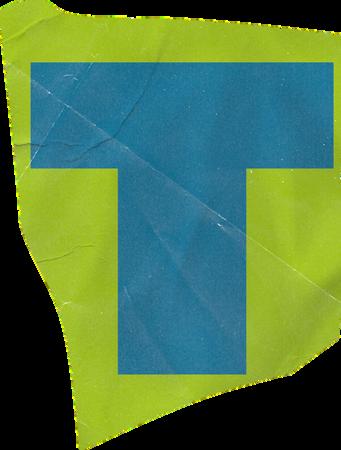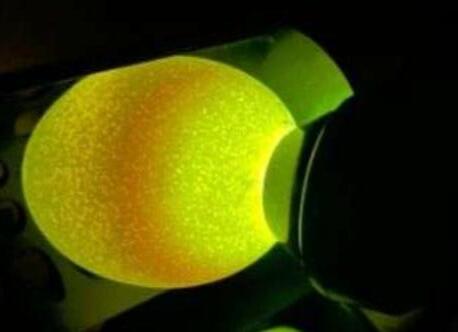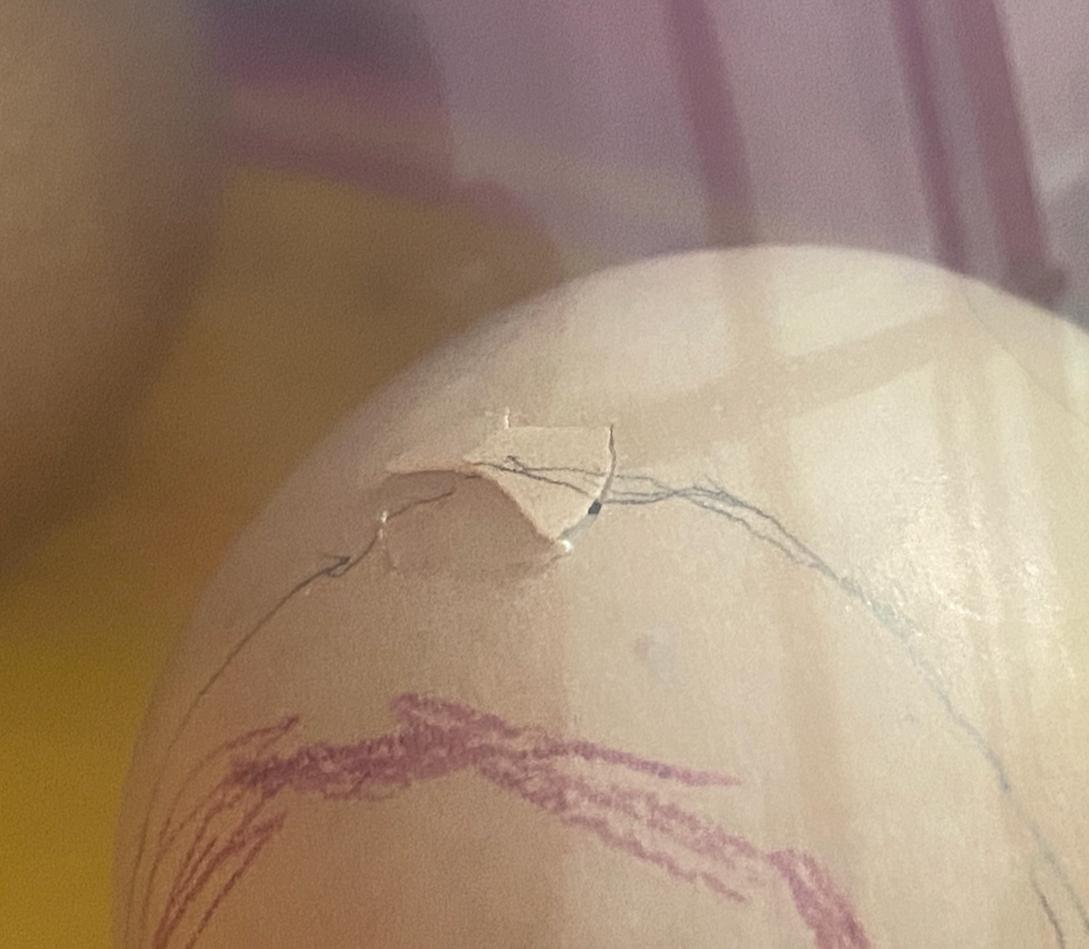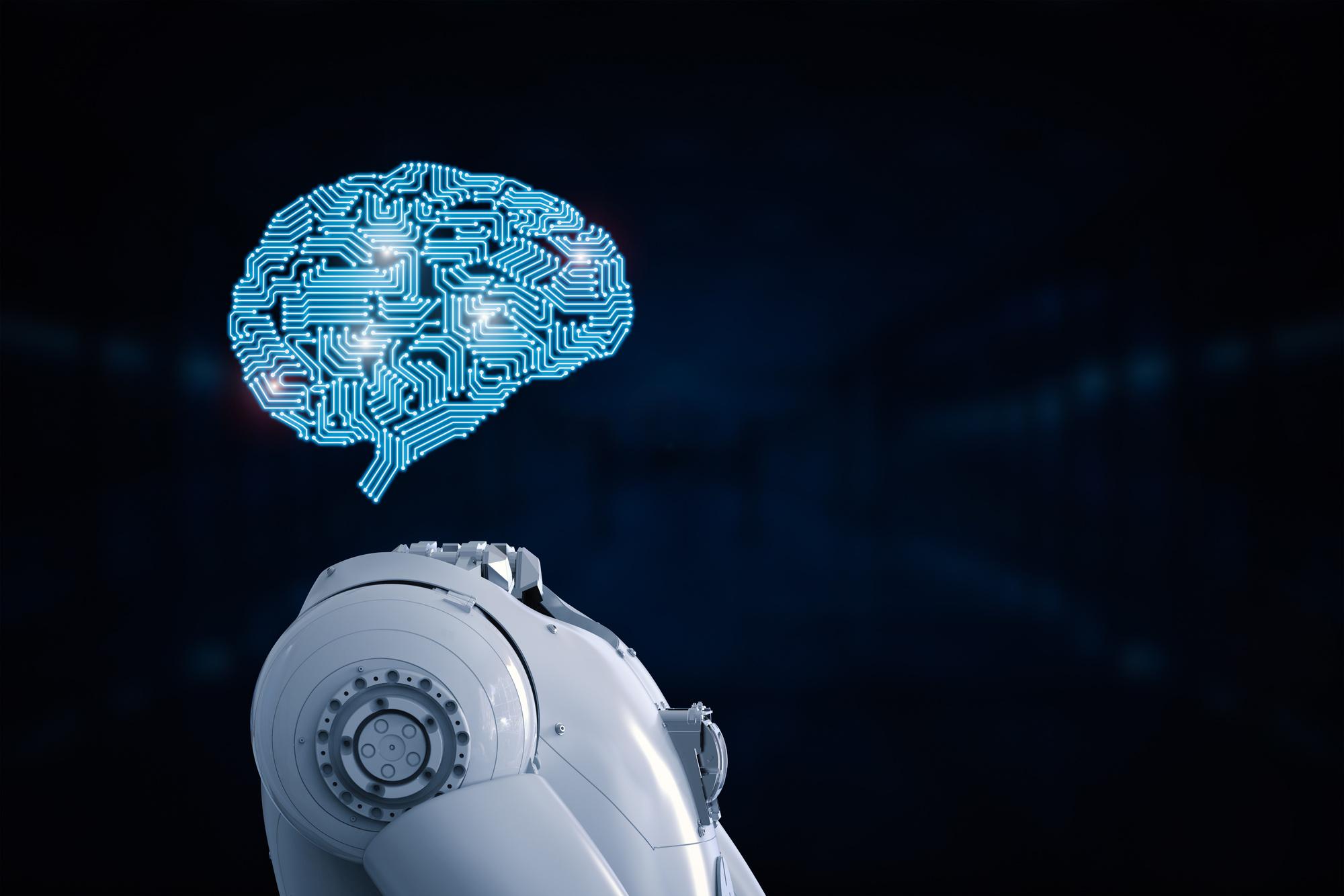
april 2024




Sky Zhu ‘26












Spring has sprung at Holton, and it’s the perfect time of year to explore the basic embryo development of one of the most iconic spring animals - the chicken!
The incubation period for a chicken embryo is about 20 to 21 days. Although modern incubators allow domesticated baby chicks to hatch year-round, their hatching season in the wild is spring. Now, let’s take a look at the day-by-day development process through photos of “candling”, where one shines a flashlight through the eggshell to visualize the inside of the egg.
Day 1-3: Blood vessels appear, tissue develops, heart starts to beat.
At this stage, the embryo is very small and cannot be easily seen through the shell
Day 4-6: Eyes are pigmented, elbows, knees, and the beak appears.
Here, blood vessels develop more and become visible
Day 7-9: Beak (starting with the “egg tooth” used to break the shell during hatching), mouth opening, and comb develop.
A darker area is visible as the embryo grows in size



Day 10-12: Tail feathers and toes/toenails appear and the comb becomes serrated.
The area occupied by the embryo continues to darken and the air sac grows
Day 13-15: Repositioning inside the shell happens, scales and feathers start to cover the body, and intestinal organs are drawn into the abdominal cavity.
Blood vessels grow thicker and almost half of the egg is taken up by the embryo
Day 16-18: More feathers appear and repositioning of the head occurs and the unborn chick grows more as it absorbs the albumen (egg white, used for nutrients and protection from pathogens).
Feathers are visible through the shell and the embryo takes up almost all of the space
Day 19-21: Yolk sac and amniotic fluid are gone, the embryo takes up most of the shell, an internal and external “pip” (breaking the membrane to the air sac and then the eventually the eggshell itself) usually happens by the end of day 21, after which “zipping” (where the chick rotates while creating small chips to exit the shell) occurs.
The air sac reaches its final size, all other space is occupied by the embryo, and both external and internal “pips” are visible




I’ve hatched chickens before and highly recommend it if you have the opportunity! It’s amazing to witness little baby chicks emerge from the shells after you’ve watched them grow for so long.






Whether it’s driving under a pitch black sky at 7 AM, or going to bed at an unexpected hour, the strange effects of Daylight Saving Time, or DST, are felt by many. DST is a system followed by several countries, especially in Europe and North America, as a method of conserving as much sunlight as possible to achieve the maximum amount of human activity each day. Clocks are set forward by one hour around springtime, and moved back one hour usually during late fall or early winter. While this slight shift in time may not seem too detrimental, DST can have drastic effects on a person’s mental and physical well-being. Here are some ways this can happen:
1. Sleep Cycles: Human brains are wired to function on “internal clocks”, which are in accordance with the regular 24-hour timing of each day. However, when the time shifts by one hour, it may take these internal clocks months to adjust, making it more difficult to wake up or go to bed at the usual time. This can lead to increased tiredness in the morning or night, depending on one’s sleep schedule.
2. School and Workplace Productivity: DST can cause adolescents to lose sleep, thus making them susceptible to attention, listening, and behavior problems in school, resulting in less productivity. Furthermore, a loss of sleep can cause a higher risk of accidents, injuries, and mental health problems. A study conducted in 2015 found that after the time change caused by DST, students were sleepier, not as attentive, and slower to react in schools.
3. Physical Health Risks: Because DST can majorly disrupt sleep schedules, studies show that these time shifts can increase risks of cardiovascular disease by 24%, strokes by 8%. Additionally, DST increases the rate of fatal car accidents in the United States by 6%, mainly because of increased fatigue in drivers and reduced visibility due to darker mornings.
4. Mental Health: Along with an increased risk of health issues, such as heart attacks and strokes, new evidence suggests that DST is correlated with changes in mental health. More specifically, the time change can induce mood swings, admissions to hospitals on behalf of mental health disturbances, and even an increased amount of inflammatory markers resulting from higher stress levels.
Consequently, although DST causes many negative effects as listed above, there are ways you can limit these effects and protect your health. Examples include gradually adjusting the times you go to bed/wake up, setting your clocks to one hour ahead on the Saturday evening before DST, and going to bed at the time you normally sleep. You can also make sure to go outside often and get enough sunlight, as this will help you achieve a more stable sleep schedule!
Further Reading:
7 Things to Know About Daylight Saving Time | Johns Hopkins Daylight Saving Time and Your Health | Northwestern Medicine




Whether it’s the Saguaro or Prickly Pear, everyone’s heard of cacti. The spiky plant is a common motif in books and movies, an ingredient in some foods, and even a great houseplant. In this fun article, we’ll be diving into the ways cactuses survive in some of the driest climates on Earth!
1. Expansive root systems: Many cacti have large root systems bigger than the plant itself, which allows the organisms to maximize water intake through roots.
Spines: A cactus’s spines are actually highly modified leaves! The low surface areas of these appendages help prevent excessive evaporation, and they also help with temperature regulation. It’s no coincidence that the spiky protrusions ward off hungry animals as well!
2. Thick skin: Many cactuses have thick outer “skins” with miniscule openings that facilitate gas exchange for photosynthesis. These pores only open up at night, which prevents too much water from escaping.
4.
3. Water storage: One of the most fascinating adaptations of cacti is their ability to store water in their tissues. Unlike leafy plants that rely on constant water from the soil, cacti store water in specialized cells within their roots and trunks. These reservoirs allow cacti to survive extended periods of drought, which may last months or even years.
These remarkable adaptations have allowed cacti to thrive in some of the most arid environments on the planet, from the deserts of the Americas to the dry scrublands of Africa and Australia. By storing water, maximizing water uptake, and minimizing water loss, cacti have evolved to become masters of survival in the desert, proving that even in the harshest of conditions, life finds a way.

AI is a very confusing subject nowadays.
People fear that their jobs will be taken or that AI will soon take over, but a new threat has now been detected. Research shows that new AI technology can read people’s minds. In a paper by Uraful Institute in Utah, we now know that by giving artificial intelligence recordings of brain frequencies, it can sort people’s thoughts into a multitude of different categories. Lyra Pfränk, the head of neuroscience at Uraful, says this new tech can greatly impact the justice system. Fantastic as this sounds, this technology is definitely still in development. Over on the ethics side, experts now are concerned about the morals of testing this AI.
Of all the ethical concerns, inherent bias in training data has been a major concern for scientists. Large Institutes™ are starting to research more into this topic, but we all have to thank the Uraful Institute for its crucial work in starting it. See the first letter of every sentence.

Amidst the frenzy known as the last week before spring break, Intro to Engineering students spent their Wednesday morning away from classes and tests. While other classes worried about that one last quiz or essay that somehow needed to be squeezed in by Friday, Ms. Davis’s and Ms. McKan’s students had other plans: to explore the National Gallery of Art (NGA).


Engineering may sound difficult because of all the high-level math usually involved, but Holton’s approach to the subject is more about design and problem-solving than complicated equations and calculations. So far this year, students have enjoyed building and testing their own catapults, water filters, earthquake-safe building models, and much more. Engineering is a very fun, low-stress class that provides students with great opportunities to practice working collaboratively and thinking creatively. This course is an amazing option for those interested in a STEAM career, as well as anyone who wants to add some hands-on experience to their school day.
The main focus of the field trip to the NGA was the Masterpieces of American Furniture from the Kaufman Collection exhibit because our next project is, you guessed it, designing our own furniture. The exhibit featured a beautiful assortment of wooden furniture from the eighteenth and early nineteenth centuries. Many students were a little too eager, as our group unintentionally set off the automated “you are too close to the exhibit” voice an embarrassing number of times.
After photographing and gaining inspiration from all of the furniture, we still had plenty of time to explore the rest of the museum. Each of the NGA exhibits is fascinating in its own way, but my personal favorite has to be Woven Histories: Textiles and Modern Abstraction, which features an amazing collection of 3D and abstract weaving and textile pieces. Textiles have often been considered lesser forms of art because of their connection to women’s domestic work, but this exhibit proves that woven art is some of the most admirable and beautiful there is. The pieces are a huge range of sizes, made from many different materials, and created by all different types of people. Click here to learn more about the exhibit.


One of my favorite artists on display was Ruth Asawa, a Japanese American wire artist. Her technique is inspired by weaving done by villagers in Mexico. She worked with wire because she loved the idea that one line could make beautiful shapes and that her work could be tangible but still able to be seen through, “enclosing [space] but not blocking it out.” In 8th grade, I created a piece inspired by her art, so it was really cool to see it up close. I highly recommend going to explore the NGA when you get a chance, and if you do decide to visit, be sure to sample the gelato (they have 20 flavors)!
engineering and art pg. 9
“I saw it not only as a way to help me, but a way to provide hope for the thousands of people who need a transplant to survive” -Richard Slayman, 62, recipient of the first genetically edited pig kidney
Imagine a world in which advanced ground-breaking biomedical technologies forge the intersection between a modified pigs and humans to combat the shortage of available organs and save those individuals desperately awaiting life-saving organ transplants. According to the United Network for Organ Sharing (UNOS), more than 100,000 people in the U.S. await an organ transplant and 17 people die each day waiting for an organ. Further, of all organs, the kidney is highest in demand with numerous individuals on endless waiting lists suffering from end-stage kidney disease coupled with a multitude of other health issues such as failed response to dialysis, diabetes, cardiac disease and previously failed organ transplants, many of whom will die or get too sick for a transplant while waiting.

A first in the world triumph -- Massachusetts General Hospital on March 16, 2024, during a four-hour surgery doctors completed the first successful genetically-edited pig (porcine) kidney transplant for a patient who was also suffering from end-stage kidney disease (ESKD). Surprisingly, the pig kidney was the same size as the human kidney. According to Nature Scientific Journal, “kidneys filter out toxic substances from the body, produce urine and help to control blood pressure.” Kidney patients monitor creatinine levels through routine bloodwork to determine kidney function and to assess when kidneys are not removing toxins from the body. “When the surgical team stitched it in, connecting its blood vessels to the patient’s, it immediately ‘pinked up’ and began making urine. It was truly the most beautiful kidney I have ever seen,” exclaimed Dr. Tatsuo Kawai. Importantly, transplant recipients are prescribed immunosuppressant medications to stop their bodies from rejecting the new organ. To date, this patient has shown no signs of organ rejection and expects to be discharged from the hospital with continued monitoring. “The success of this transplant is the culmination of efforts by thousands of scientists and physicians over several decades. We are privileged to have played a significant role in this milestone. Our hope is that this transplant approach will offer a lifetime to millions of patients worldwide who are suffering from kidney failure,” Dr. Tatsuo Kawai said.


The Federal Drug Administration (FDA) approved transplants in the U.S. of animal organs into humans on the grounds of “compassionate use” used in rare cases when a person’s life is at risk and no other treatments are available under the single FDA Expanded Access Protocol (EAP).
The genetically-edited pig kidney was modified by eGenesis Bio using CRISPR-Cas9 technology to make a record of 69 edits to the pig’s DNA in an effort to address organ transplant rejection, a clinically significant fatal common reaction following a transplant. Seven human genes were added to stimulate production of proteins to combat organ rejection. Additionally, the genetic changes were made to inactivate viruses within the pig genome to combat the risk that pig viruses could be active once the kidney is placed in the human body causing cross-contamination. As compared to the pig heart transplant, “[t]he first genetically modified pig heart to be successfully transplanted into a living person was later found to be tainted with a latent virus, which might have contributed to the organ’s eventual failure. Pig pathogens can infect the recipient.” Researcher Dr. Wenning Qin stated, eGenesis regularly tests its pigs for pathogens including porcine cytomegalovirus which can linger quietly in its animal hosts.” Dr. Qin was the physician responsible for editing the genetics, including human compatible cells and tissues of the genome for making the pig kidney suitable for transplant into a human recipient.
“Xenotrasplants” are the transplants of animal organs into humans and are crucial to solving the organ shortage, particularly in economically and racially disadvantaged populations many of whom experience significant barriers to accessing health care, and in the most severe cases, life-saving organ transplants.
In conclusion, more research is needed including clinical trials with humans to delve deeper into performing xenotransplants on a larger scale and to analyze and understand the effects of genetically altered kidney transplants. Further, researchers must address bioethicists who raise concerns about cross-contaminating animal viruses to humans and slaughtering animals to harvest organs. Following this amazing discovery actualized in a medical setting, what role would you rather play in this scenario, biomedical engineer, physician, surgeon, bioethicist, or researcher?
Further Reading:
First pig kidney transplant in a person: what it means for the future
First living patient with transplanted pig kidney goes home from the hospital | CNN
World’s First Genetically-Edited Pig Kidney Transplant into Living Recipient
Performed at Massachusetts General Hospital
First human transplant of a genetically modified pig kidney performed
First-ever transplant of pig kidney to patient a success | Harvard Gazette


play at this link and share your score!

Looking for an extra STEAM challenge? Interested in using coding or graphic design to help solve real-world issues? The Wix Creators of Tomorrow contest might be for you!
Description from their website: “Creators of Tomorrow is a website creation challenge designed to equip young innovators (ages 16-21) with future-ready skills, entrepreneurial mindsets, and professional tools to be the trailblazers of tomorrow.”
This web design contest offers cash prizes and mentorships for selected students to continue exploring their coding and graphic design interests. Projects can be submitted individually or as part of a group of up to 5 students.
Click here or contact Ms. Hassell (lucia.hassell@holton-arms.edu) to learn more! If you enter, contact a member of STEAM Spotlight exec to get your website featured in a future issue
games pg. 14
Thanks for reading the April 2024 issue of Want to be a part of STEAM Spotlight?

Contact anyone on exec to get involved!
sky.zhu.2026@holton-arms.edu
yvonne.zhu.2026@holton-arms.edu
carter.thompson.2026@holton-arms.edu

malia.humphriesdo.2026@holton-arms.edu
maggie.shelton.2026@holton-arms.edu
grace.curley.2025@holton-arms.edu
aleca.aukhert.2025@holton-arms.edu